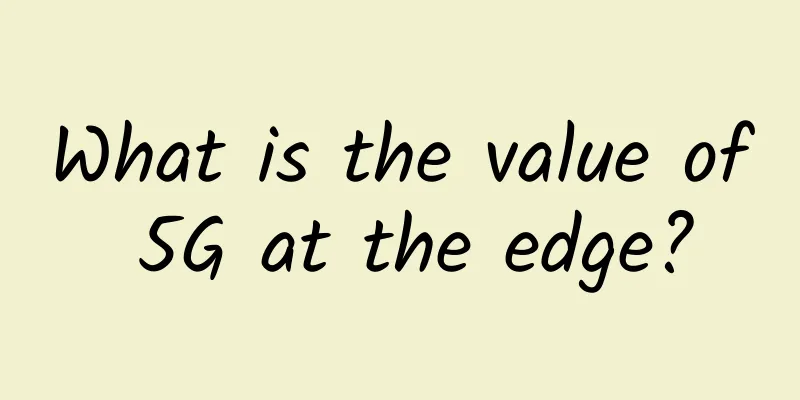MU-MIMO technology: the key to turning slow networks into lightning-fast ones

|
In recent years, with the rapid development of wireless technology and smart home, wireless surveillance cameras, network TVs, home projectors and other home networking devices have been added to the home wireless network. However, the more connected devices there are, the slower the network speed is. This is because most routers in the past could only transmit data to one device at a time, which means that the devices had to queue up in turn and wait for data transmission. But now, this problem has been greatly improved, and it is the MU-MIMO (Multi-User Multiple Input Multiple Output) technology that has changed all this. The emergence of MU-MIMO technology allows routers to communicate with multiple devices at the same time, truly improving the utilization of network resources. Increasing the RF chain used for transmission can greatly improve the downlink performance. Adding more transmission devices can strengthen signal guidance control and achieve higher data rates while reducing interference. How does MU-MIMO work? We already know that the main purpose of MU-MIMO is to improve the efficiency of Wi-Fi networks, but how does it do that? To make it easier to understand, you can imagine the traditional 802.11ac router signal as a "circle". This circle is the coverage of the signal, and the antenna is at the center of the circle and transmits the signal 360 degrees outward. The router will communicate with the devices in the "circle" one by one at a time, and no more than one device can communicate. MU-MIMO (Multi-User Multiple Input Multiple Output) is a common multi-antenna technology, including uplink MU-MIMO and downlink MU-MIMO. Different users use the same time-frequency resources for uplink transmission (single-antenna transmission). From the receiving end, these data streams can be regarded as coming from different antennas of a user terminal, thus forming a virtual MIMO system, namely uplink MU-MIMO. Downlink MU-MIMO can separate the data streams transmitted to different users by eliminating/nulling the data streams at the receiving end. In addition, downlink MU-MIMO can also separate the data streams of different users in advance by using beamforming at the transmitting end, thereby simplifying the operation at the receiving end. What are the advantages of MU-MIMO technology? We have already explained at the beginning that MU-MIMO technology (Multi-User Multiple Input Multiple Output) allows the router to transmit data to multiple devices at the same time, greatly improving the network speed by shortening the time each device waits for the signal. According to relevant data, each household has an average of 8 sets of devices competing for bandwidth at the same time. MU-MIMO technology will greatly improve the wireless network experience at home. For users of home wireless networks, constant buffering, lags and other annoying issues prevent us from enjoying the network to the fullest. Therefore, the performance improvement based on MU-MIMO technology will benefit wireless network users. Below, we will look at several examples of MU-MIMO technology on wireless networks. Since the time all connected devices have to wait to get data from the wireless router is shortened, the operating speed of both MU-MIMO devices and non-MU-MIMO devices (SU-MIMO devices) is improved. In addition, MU-MIMO technology can increase the capacity and efficiency of the router, allowing the router to handle more network activities, such as high-definition streaming video, online games, etc., for a better home entertainment experience. Are MU-MIMO routers compatible? In fact, all wireless devices are compatible with MU-MIMO routers. Of course, if you want to get the best Wi-Fi performance improvement, the device must support MU-MIMO technology, and the number of devices supporting MU-MIMO technology is gradually increasing. This can be seen from the CES exhibition in the United States and the Computex exhibition in Taiwan. More desktop computer, laptop, smartphone and tablet computer manufacturers will increasingly support MU-MIMO technology in the future. According to DigitalTrends.com, MU-MIMO technology is expected to become standard for most devices this year. Future Prospects of MU-MIMO Technology As Wi-Fi usage continues to increase, it is obvious that only by turning to MU-MIMO technology can we better adapt to the increasingly large data transmission. It can be seen that the future prospects of MU-MIMO technology are very promising. With the launch of MU-MIMO wireless chips by chip manufacturers such as Qualcomm and the launch of MU-MIMO devices by more and more router manufacturers, a complete MU-MIMO system will be created.
|
<<: Does your phone support 5G wifi? Is 5G Internet access really fast?
>>: China's 4G speed compared to the United States: the gap is amazing
Recommend
Want to port your number smoothly? Here is a guide to porting your number
Since the official implementation of the "nu...
HostBrr: $4/month VPS with large hard disk - 2GB memory, 1TB hard disk, 3TB monthly traffic, German data center
HostBrr is a Danish hosting company founded in 20...
Microsoft: Open RAN is crucial to network cloudification and the two will eventually merge
In a comment document submitted to the US Federal...
What serious consequences will arise from the “winner takes all” approach among Internet giants?
1. “Winner-takes-all” and multi-sided platforms w...
How to use the Shodan search engine to diagnose vulnerabilities?
The Shodan search engine allows users to find spe...
RackNerd Seattle VPS Promotion $12.99/year - Single core, 1G memory, 15G hard disk, 2TB monthly traffic
At the beginning of the month, RackNerd released ...
Jack Ma: Who you will be in 18 years is decided today
[51CTO.com original article] The World Internet o...
How 5G's low latency will drive new applications and use cases
Why is low latency important for 5G? Latency is a...
In the 5G era, how to innovate network construction models?
The full opening of the 5G commercial era and the...
Wi-Fi HaLow could be the next IoT enabler
[[435063]] WiFi HaLow is poised to become the nex...
Wi-Fi 6: What's different and why does it matter?
Wi-Fi 6 is the next generation wireless standard ...
10gbiz: 35% off on all VPS hosts, Hong Kong CN2 GIA/Los Angeles CN2 GIA line monthly payment starts from $2.4
10gbiz has launched a promotion this month, offer...
Li-Fi, which failed to beat WiFi, may be the savior of 5G
Regarding the technical solutions for future comm...
Http protocol: Under what circumstances does an options request occur?
background: A new colleague asked me that there w...
Making cities smarter! Huawei's smart city nervous system demonstrates stronger capabilities from bottom to top
[51CTO.com original article] On the morning of Au...









